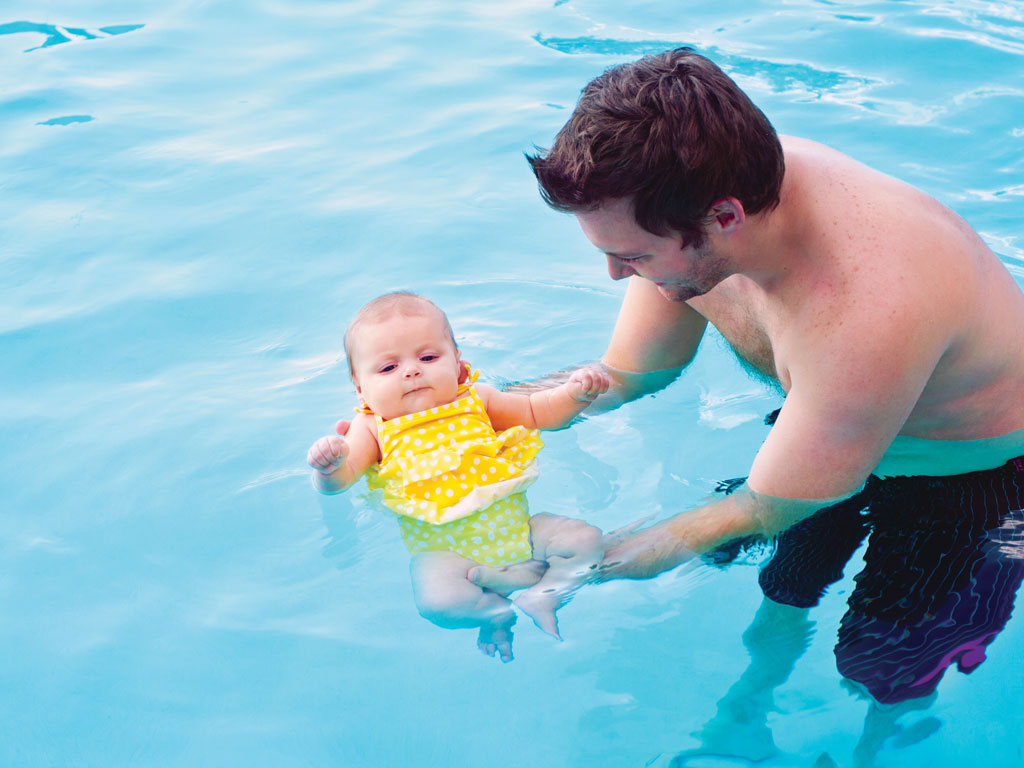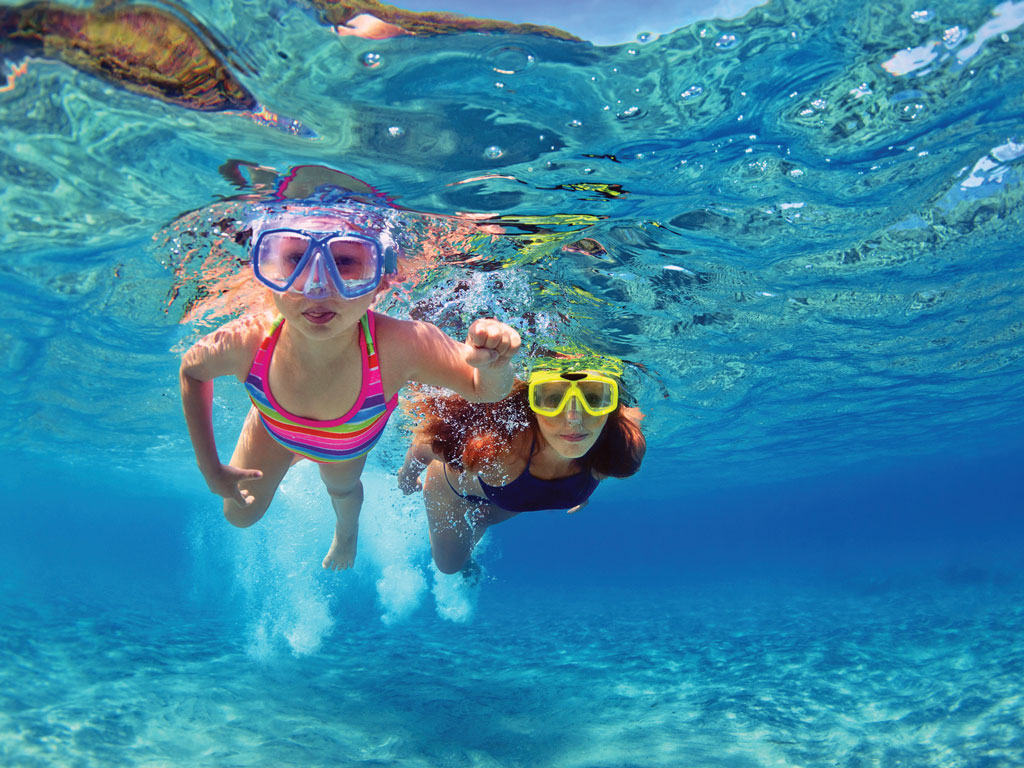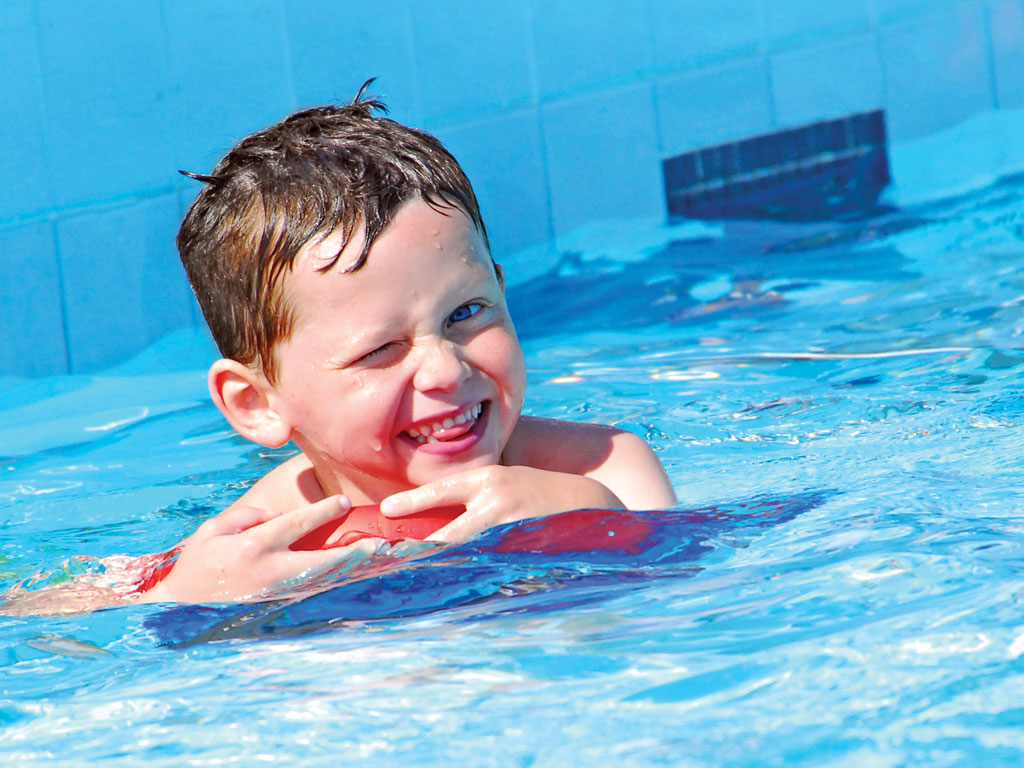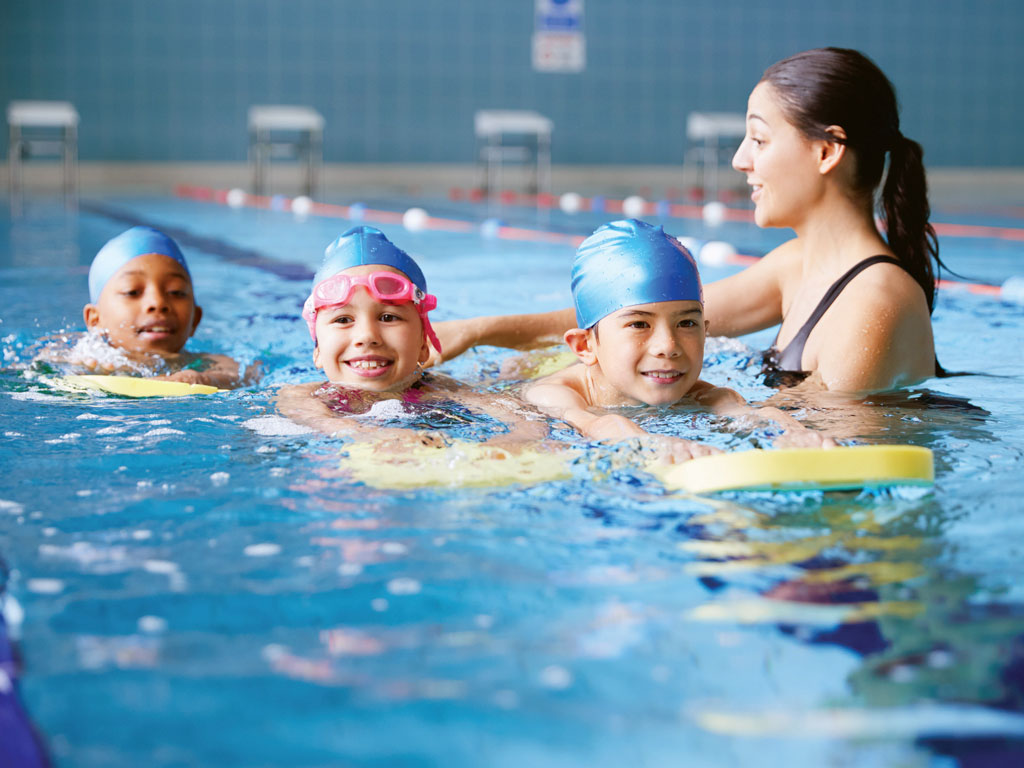by Stephanie Lopes
Living in Hawaii, the glistening Pacific Ocean provides a plethora of recreational activities: swimming, surfing, boating, fishing, snorkeling, building sandcastles and much more. However, the water also poses several risks.
In fact, drowning is “the fifth leading cause of fatal injuries among Hawaii residents with an average of nearly 40 deaths per year,” according to the Hawaii Department of Health. “There is a serious risk of drowning in Hawaii as we are surrounded by the ocean and many locals’ lifestyles involve water activities and going to the beach to swim. In addition, many condos have pools, and more condos are being built giving more people access to pools,” says Amber Smith, owner and swim instructor at Wiki Wiki Swim School.
Despite the risks, with some knowledge and preparation, the water can be a wonderful place to play and make memories. Smith kindly shares the top water safety tips, applying her years of experience teaching keiki to swim safety throughout Oahu.
Recognize drowning.
A struggling swimmer might not always be apparent, so it is important to recognize the signs of drowning in order to assist immediately.
“For the untrained person a drowning person may look like they are ‘swimming’ in one spot or just bobbing up and down for air, but they are essentially drowning and trying their best to survive,” describes Smith.
“A misconception about drowning is that you might expect the person to call out for help or be flailing frantically and making a lot of splashes. But this usually isn’t the case, as the person drowning has probably already expended all their energy. Often drowning occurs silently, and those around don’t know the person is in trouble until they are under the water and not moving or responding,” says Smith.

Master survival swim skills.
A few swimming survival skills can greatly reduce the risk of drowning and can be mastered by children who are as young as one year old.
“Top survival skills to prevent drowning include learning to float on your back and learning to roll over to your back,” Smith expounds. “Being able to float on your back can allow you to rest and catch your breath if you ever find yourself out of energy and out of breath.”
Besides these basic survival skills, more swimming practice can lead to the mastering of advanced skills, lessening the chance of drowning greatly. “Learning to tread water is also a good survival skill. It does require a lot of energy, so if you train to tread water, you most likely will be a stronger swimmer,” Smith illuminates. “Learning to swim 25 yards without stopping is great for survival, especially in a pool setting. No matter the size of the pool, if you can make it 25 yards you should be able to safely swim to the side.”
Sign up for swim lessons.
To master these water survival skills, sign up for swimming classes! Swim lessons not only will help children (and adults) to swim safely but can also develop a healthy lifelong hobby.
Wiki Wiki Swim School offers “private one-on-one lessons for all ages and skill levels in the comfort of your home or condo pool. We teach safety and survival first then move on to strokes. We offer swim team prep and swim training for triathletes,” Smith explains.
Prevent swimmer’s ear.
While practicing those survival skills and swim strokes, one of the most common ailments that can develop is swimmer’s ear. But, thankfully, it can also be easily prevented.
“Swimmer’s ear is an infection of the outer ear canal. The most common symptom is redness, but most of the time you’ll know you have swimmer’s ear because your outer ear will hurt,” Smith describes. “In some cases the inner ear may also hurt and can be associated with a feeling of fullness.”
Fortunately, in Smith’s five-plus years as a swim instructor, she has only had one of her hundreds of students experience a swimmer’s ear infection. Prevention includes thoroughly drying the ears after swimming using a towel (not Q-Tips).
“If you are prone to ear infections you can wear earplugs and a swim cap which covers your ears while you swim; these two combined will give your ears great protection while swimming,” Smith advises.

Supervise keiki in the water – always.
Even if your child is an expert swimmer, they should never be swimming alone and should always be supervised by an adult to minimize water risks.
“If your children are trained to wait for permission to enter the water, there are less chances for lack of supervision since you’ll know when they’re in the water,” says Smith. “Also, always swim with a buddy!”
Follow pool rules.
Review the list of rules posted at the pool with your child. Ask them why they think each rule is important and what the possible implications of not following the rule might be.
Smith expands on a few common pool rules, “Many condo pools are very shallow, and have rules, such as no jumping and diving, for a reason; definitely, follow these rules to prevent injuries. For adults, swim sober.”
Swim near a lifeguard.
Whether at the pool or at the beach, it is always best to swim near a lifeguard, who is trained to recognize drowning and prevent potential injuries.
“If you’re swimming at a beach for the first time, ask the lifeguard about any hazardous conditions and the safest place to swim,” Smith advises. “If a lifeguard tells you not to go out, listen to the lifeguard. Know your capabilities and stay within them.”

Know the ocean’s hidden hazards.
Even expert swimmers and surfers can struggle in Hawaii’s ocean waters, as the ocean’s currents, depth and breaks can be nearly impossible to predict at times.
Smith expands, “Water visibility can make it difficult to see hidden hazards such as large rocks or even to spot your child if they go under the water. There are strong undercurrents that can’t be seen, which can easily sweep one away from shore quickly. It’s also hard to gauge the depth of the ocean, and there are many beaches where the shoreline drops off rapidly, and suddenly, you’re in deep water. We also have a lot of shore breaks with strong waves that come in sets; it may seem calm and flat one minute, then suddenly a large wave will come in.”
How can families safely enjoy the ocean? “Be aware of the current ocean and weather conditions and pay attention to warnings. Also, always keep your eyes on the waves coming in; don’t turn your back on the ocean. If you’re in doubt, don’t go out,” Smith concludes.
To learn more about Wiki Wiki Swim School’s swim lesson program, visit wikiwikiswimschool.com.





